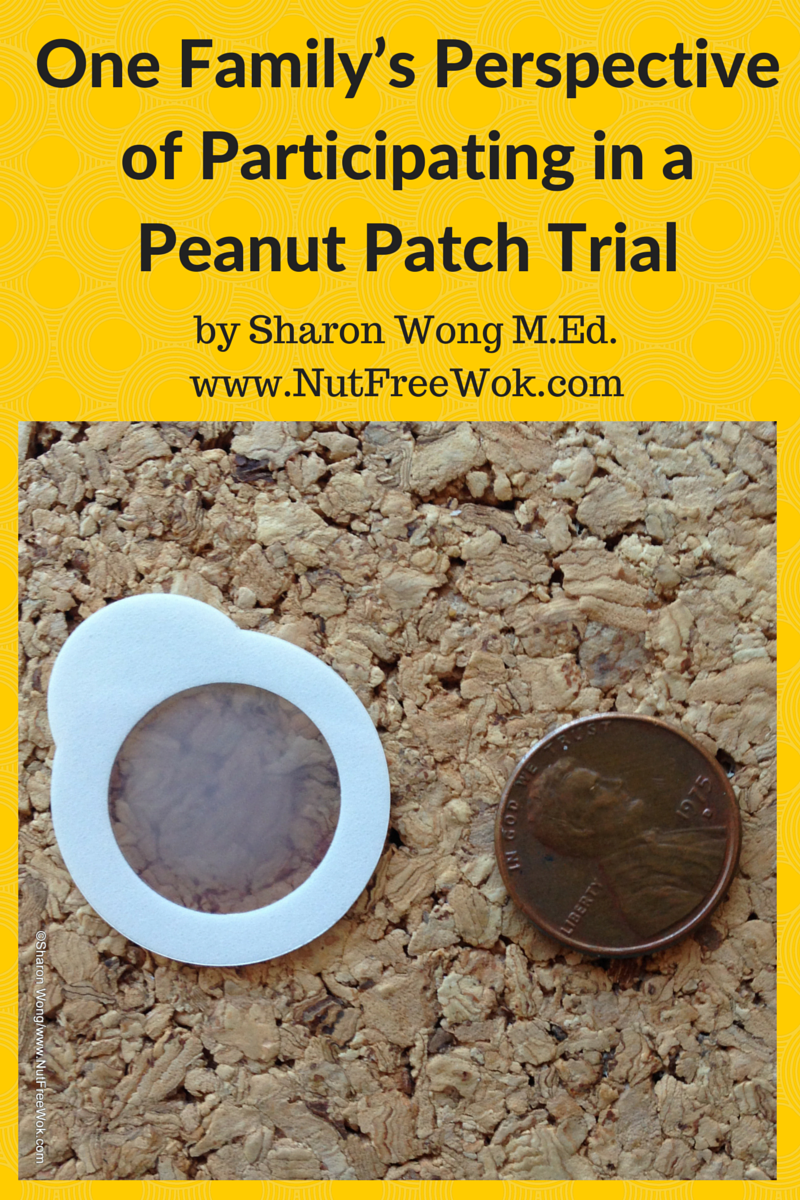
One Family’s Perspective of Participating in a Peanut Patch Trial
By Sharon Wong, M.Ed.
Food Allergy & Anaphylaxis Michigan Conference
August 29, 2015
I am very pleased to share with you about our family’s experience regarding the OLFUS-VIPES peanut patch trial and an update about what has been publicly shared via DBV Technologies in the press and at allergy conferences. While I’m delighted with my son’s progress, he is just one of 171 participants in the current phase IIb trial and his experiences should not be considered indicative of the final results. I eagerly await the publication of the conclusions that includes the data from all of the trial participants and pending FDA approval as a treatment for peanut allergy.
Our Family’s Life with Food Allergies
Our happy go lucky son was full of life and spirit but never discouraged by his weepy rashes, prolonged respiratory illnesses, or random vomiting as a baby and toddler. Our previous pediatrician was of no help. When we finally realized our son had food allergies and received proper diagnosis from our allergist in 2006, my husband and I tried our best to keep our son safe by being careful of what he ate, by taking his epinephrine auto-injectors everywhere we went, and by keeping his environment at home and at preschool as allergen safe as possible. We wanted the best for our son and provided support so that he could grow and thrive and not be held back nor defined by his food allergies, asthma, and eczema.
However, it is difficult to live life fully when one is blindsided by traces of peanuts everywhere. Being in a classroom with a trash can full of granola bar wrappers, walking past a restaurant that serves free peanuts, and a lifeguard snacking on nuts during swim lessons were all situations which caused my son to have minor reactions. Each accidental exposure prompted us to pause and assess his symptoms and decide what to do. Do we wait and see if his symptoms would diminish naturally? Does he need antihistamines or epinephrine? What’s our exit strategy if he needs medical attention right away at an emergency room?
My son’s allergic symptoms to minute amounts of peanut protein would subside most of the time but there was the one time his symptoms continued to escalate despite taking antihistamines. My husband was out of town and I was afraid of letting my son go to bed with worsening allergy symptoms for unknown reasons, so I took him to the nearest emergency room for my peace of mind. The doctor concluded my son was experiencing anaphylaxis and ordered a shot of epinephrine which immediately made my son feel better. I later found out that his reaction was due to sitting next to someone who ate a small amount of peanuts earlier. My take home lessons from that night were 1) I can trust my instincts, 2) never drive to the ER again (call 911 instead) and 3) epinephrine works quickly.
Confronting Our Fears and Finding Hope
Our trusted and beloved allergist, Dr. B., is always spot on but I can be slow to catch on. When he first told me about the food allergy clinical trials at Stanford by Dr. Kari Nadeau, I was too scared to call her because I didn’t even know that there were potential food allergy treatment options under investigation let alone understand what they were and how would they help my son.
Then we came face to face with reality when my son needed epinephrine after merely sitting near someone who had eaten a small amount of peanuts hours earlier. I wasn’t upset with my friend but felt devastated by the severity of my son’s peanut allergy and couldn’t stop myself from bursting into tears at the most awkward moments for the next few weeks. My husband and I couldn’t resign to feeling helpless and subject to the random tyranny of anaphylaxis and neither could our son. Even at 9 years old of age, he understood he needed Dr. Nadeau’s expertise.
When I finally reached out to Dr. Nadeau in early 2012, she very kindly explained that there were no openings in her current oral immunotherapy trials (OIT) but she could screen him for a peanut patch trial later in the year. She assured me that the peanut patch trial would be safe, that the most common symptom from wearing a patch was a localized rash, and if the patch caused too much irritation or a reaction, we can remove the patch.
My son’s safety was my main objective. I feared he was “too allergic” to participate in a trial but I desperately needed for him to be less at risk of anaphylaxis from traces of peanuts and not develop any unintended side effects associated with any potential treatment. Would she treat people with a history of reactions to airborne peanuts? I’m so grateful for her compassionate reply that those with severe allergies need help the most. I felt hopeful for the first time in a long time.
Year 1: Embracing the Research Process
My son’s first OLFUS-VIPES clinical trial screening appointment was in December 2012. The screening process includes evaluating a prospective participant’s medical history (blood tests, skin tests, history of reactions, and other health conditions), answering any questions that family members or the patient might have about the trial, and choosing to consent or not. It’s necessary to include patients who are severely allergic to peanuts but who can safely participate according to inclusion and exclusion criteria, all of which are available on clincialtrials.gov.
Once enrolled in the study, there are additional allergy skin prick tests, blood tests, and a double blind placebo controlled food challenge (DBPCFC) to confirm that the person is indeed allergic to peanuts and to establish a baseline. Every visit includes a physical examination, spirometry to check for lung function, and continuous monitoring of vital signs during food challenges. I’m glad that patient safety is of utmost importance.
A DBPCFC takes place over two days, one day for placebo doses only and a second day for just peanut doses. Small amounts of doses are given in increasing amounts every 30 minutes. However to prevent biases in the results, neither the patient nor the medical staff members know what is mixed into the chocolate pudding. The medical staff members closely observe during the DBPCFC, continuously monitor vital signs, and stop the challenge as soon as there are objective symptoms which are graded for severity according to Bock’s criteria. The DBPCFC is repeated every 12 months to monitor progress.
We fully embraced the risks, uncertainties, and potential benefits of participating in a food allergy clinical trial in order to help advance a cure for food allergies and have a chance for a safer future. We didn’t know whether he would be in the placebo group or treatment group. We didn’t know what would happen at the end of the year. We didn’t know what would happen to his other food allergies. We just needed to trust that the daily treatment of the patch and the periodic testing at the clinic would be safe.
I believe the DBPCFC is admittedly the most mentally and physically difficult part of being in the trial while the daily life experiences with the peanut patch are very easy. The DBPCFC is necessary for the purposes of the clinical trial research to confirm that one is severely allergic by reacting to an amount less than 1 peanut and not allergic or reactive to the placebo doses. Additionally the initial challenge helps to quantify one’s starting baseline and to provide data to answer questions such as “Is Viaskin Peanut safe and effective?”
Most of us are familiar with skin tests and blood tests as part of the food allergy diagnosis process. And when there’s a glimmer of hope that one might have outgrown their food allergy, then there’s a good reason to take a risk in ingesting a known allergen. But when one is faced with eating an allergen until one has an allergic reaction, each dose requires courage and determination for all parties involved.
I’m so thankful that a friend and I decided to team up and schedule all of our appointments together for support. Our sons have become good friends and encourage and motivate each other through their toughest moments. My heart fills with pride and admiration for my son and his Peanut Patch Pal when they face their fears and overcome physical discomforts with courage and a healthy sense of humor.
Baseline DBPCFC Confirmed What We Already Knew
After a final check of his vital signs, skin, and throat, my son had his first taste of chocolate pudding with 1 mg of peanut (or placebo) with chocolate pudding on a tiny spoon and the plan was to wait and observe for 30 minutes and then take additional doses every 30 minutes. My son started to cough, his face turned red, and the doctor could see his throat start to swell. His challenge was over within the first few minutes and his symptoms subsided after a dose of antihistamine. We stayed at the hospital for 3 more hours for monitoring.
He ate all of his placebo doses without incident during day 2 of his DBPCFC and qualified for the trial. We learned from our first DBPCFC that my son had an immediate reaction to 1/240th of one peanut. It was sobering to realize that such a small amount could have such a concerning effect on him. I felt grateful that our family’s constant vigilance was effective in keeping him safe and that we could hope that the patch will help him be desensitized.
Daily Life with Viaskin Peanut
My son received enough patches until his next appointment. The patches are about the size of a coin and are applied on healthy skin. We apply the patch every day on his back while teens and adults apply the patch on their upper arm and secure the patch in place with a piece of Tegaderm, an adhesive film.
There are no activity restrictions while wearing the patch. We were asked to avoid peanuts and his other allergens during the trial and to record any unusual symptoms, illnesses, or allergic reactions in a journal.
We knew that he had a 25% chance of receiving one of the following in the VIPES study: placebo (doesn’t contain any peanut), 50 mcg, 100 mcg, or 250 mcg peanut but we didn’t know which one because the VIPES study was blinded. He has blood and skin tests to monitor his progress periodically and annual DBPCFC every December.
End of Year 1 DBPCFC
One year later, my son had his second DBPCFC in December 2013. He breezed through his day 1 and on the day 2 of his DBPCFC he immediately recognized the taste and sensation of peanuts in his first dose of 1 mg. He looked uncomfortable as he sat quietly for the next 30 minutes. Tina Dominguez, the Physician Assistant who works with Dr. Nadeau, checked him thoroughly and couldn’t find any observable symptoms.
My 10 year old son ate his second dose of 3 mg of peanut protein in chocolate pudding and I held my breath in anticipation. He didn’t look well and Tina confirmed that his breathing was affected. She stopped the challenge, treated his symptoms with antihistamines, and his symptoms quickly resolved with monitoring for the next few hours.
We learned this time around that we could trust our instincts. My son knows when he’s eating a miniscule amount of peanuts and I know that his outward signs of distress are clues that something is happening inside. It seemed likely he had the placebo patches given the negligible improvement but we could only guess because the trial was still blinded. One year of placebo was the same as one year of doing nothing, didn’t cause him any harm, and didn’t really matter in the grand scheme of things. We were happy to learn that my son was invited to participate in an extension trial for the next two years.
Year 2 with 250 mcg Dose Peanut Patches
Early results of the VIPES study demonstrated that people in the 250 mcg peanut group had robust results. Therefore all participants in the Open Label Follow Up Study (OLFUS) would switch to the optimal dose patches for 24 months. The participants who achieve a certain level of tolerance at the end will go two months without treatment and then be assessed for sustained unresponsiveness.
We consented to the OLFUS extension trial, went home with more patches, and carried on. The new patches caused some redness and swelling under the patches, but those symptoms subsided gradually within a few weeks. He hasn’t experienced any additional discomfort or side effects from the 250 mcg peanut patches since then.
End of Year 2 DBPCFC
At his December 2014 visit, Tina confirmed that my son was in the placebo patch group the first year and the 250 mcg peanut patch the second year. He had his usual spirometry, physical, skin and blood tests to check whether he is healthy enough to proceed safely in another round of two days of DPBCFC. We weren’t sure what to expect when his last cumulative reactive dose was 4 mg the year before and the starting dose was 10 mg this time around.
He breezed through his doses on day 1 of DBPCFC. We guessed that his chocolate pudding contained placebo doses on day 1 and day 2 would probably contain peanuts. Much to my surprise and unlike the first two years, day 2 was easy. Even though he could taste the peanuts, he consumed the first 4 doses over two hours without discomfort while playing and talking with his Peanut Patch Pal and my other son.
Each dose exceeded my expectations as my son ate them in a matter of fact way. I observed with admiration, amazement, and anticipation. He ate his fifth dose of 1,000 mg of peanut and within minutes he vomited twice and he achieved a cumulative reactive dose of 1,440 mg. Tina gave him some antihistamines and he nonchalantly went back to playing computer games with his Peanut Patch Pal for a few more hours of monitoring.
A New Beginning for Now
Our family has come a long ways from our early days of managing our son’s multiple food allergies. We struggled with the dilemma of are we too scared to seek out a treatment or are we too scared of doing nothing. We embraced any uncertainty regarding the outcome of a clinical trial because it was a chance to help my son while benefiting others with his participation in food allergy research.
My son nears the end of his OLFUS-VIPES trial. He continues to change his 250 mcg peanut patches every day. We still avoid peanuts and his other food allergens, carry epinephrine, read ingredient labels, and work with his school to accommodate his food allergies. He is still considered allergic to peanuts but his tolerance has increased from 1 mg to 1,440 mg of peanut protein, nearly the equivalent of 6 peanuts and an amount hopefully much greater than random amounts of peanuts in the air.
Even though I was aware of his improved tolerance, we slowly let our guard against minute amounts of peanuts. We learned to walk by restaurants that serve free peanuts casually instead of fearfully. We feel more comfortable about traveling longer distances and dining in restaurants with precautions in place. Each mini-success gives us confidence and improves our quality of life. My son is happier and healthier.
Our family has been very happy with our son’s participation in the peanut patch trial. We feel that the clinical trial protocol has been safe for him and the patch has been convenient to use, without activity or dosing restrictions. We will gladly continue to do everything necessary to keep him safe due to his other food allergies, which are manageable. We don’t know what the future may be regarding the outcome of the trial or what will happen at his next DBPCFC at the end of the year. Regardless, we do believe he is much safer and we couldn’t be where we are without acknowledging the following:
- Our friends and family members who have been supportive about going out of their way to keep my son safe and kind with encouraging words, heartfelt prayers, and practical help.
- Our Peanut Patch Pal, his parents, and all the other peanut patch families we have met along the way. They have become an invaluable support at our appointments and in the days in between.
- My son’s school administrators and teachers who have been unconditionally supportive and work with us to keep him safe at school as well as work with him to make up missed lessons and assignments due to his lengthy appointments.
- Dr. Nadeau, Tina, and the rest of the staff at Sean N. Parker Center for Food Allergy Research have been incredible at putting us at ease while keeping my son safe as we move forward together.
- Most of all, we are grateful to Dr. Pierre-Henri Benhamou and DBV Technologies for developing Viaskin Peanut.
I have so much hope for the future of food allergies. Please wish my son luck and send good thoughts and prayers for him in December for his next round of DBPCFC, thank you!
Quick Facts About DBV’s Viaskin Peanut
- DBV Technologies is a French biopharmaceutical company that is researching and developing Viaskin Peanut. Research is underway to develop patches to treat milk and egg allergies as well. This type of treatment through the skin is also known as Epicutaneous Immunotherapy (EPIT). Be sure to watch the video on DBV’s website.
- Viaskin Peanut patch is a coin sized self-adhesive disc which is changed daily and applied on either the back for young children or on the upper arm for teens and adults over healthy skin. Each patch contains a tiny amount of peanut powder on it and when applied on the skin, the patch becomes a condensation chamber where sweat accumulates. The sweat solubilizes the peanut protein which allows the skin to absorb the peanut. Langerhan cells transport the peanut protein into the lymph nodes where immune activity takes place. The peanut protein never enters the bloodstream, thus reducing the risk of anaphylaxis.
- July 2012: Phase IIb VIPES trial launched and is notable for being the largest international clinical trial with 221 patients at 21 centers in Europe and North America. This trial compares the results of using placebo patches and patches containing 50 mcg, 100 mcg, and 250 mcg of peanut protein.
- February 2013: Researchers announced phase Ib study results and determined that the main side effect is a localized rash. They concluded that the patch is safe and convenient.
- July 2013: NIAID sponsors a separate peanut patch study, DAIT COFAR6 and this study compares the results of 75 patients wearing placebo, 100 mcg peanut, or 250 mcg peanut. For more details, visit the study record posted on clinicaltrials.gov.
- March 2014: DBV announced results of the Arachild study. After wearing 100 mcg peanut patches for 18 months, 67% of participants (15 people) were able to tolerate 10x more than their baseline but only 4 were able to ingest more than 1000 mg of peanut protein. There were no severe adverse events and localized rashes were common.
- September 2014: DBV announced that VIPES met trial endpoints and determined that the 250 mcg peanut patch is most effective and associated with a significant increase of IgG4. More than 50% of children in the 250 mcg group were able to tolerate more than 1000 mg. There was a high rate of compliance with the treatment and a low rate of drop outs from the trial. There were no severe allergic events such as anaphylaxis related to the patch.
- VIPES trial participants were invited to an extension study (OLFUS) for an additional 24 months of treatment with the 250 mcg peanut patches. Those who achieve desired tolerance would continue on in the trial for 2 more months without treatment to assess sustained tolerance. Every subject using the placebo, 50 mcg and 100 mcg peanut patches were switched to the 250 mcg peanut patches during the OLFUS-VIPES trial.
- April 2015: DBV announced that the FDA considers Viaskin Peanut as a breakthrough therapy due to positive Phase IIb results thus far. Viaskin Peanut is considered a breakthrough because there is no other FDA approved treatment for peanut allergies and the treatment results are significantly better than the placebo results.
- Phase III Viaskin Peanut trial (PEPTITES) will launch in early 2016. If interested,discuss with your doctor to possibly enroll at a facility near you. One can search on clinicaltrials.gov for more details about the PEPTITES trial as it becomes available.
- Pending FDA approval and further research, the peanut patch might be available in 2018. And we can look forward to more information regarding what is the length of treatment (possibly 3 years?) and what happens at the end of treatment.
Thank you Anne F. Russell, BSN, RN, AE-C, director of Food Allergy & Anaphylaxis Michigan Association for inviting me to share our story for FAAMC’s conference. And many thanks to Tina L.R. Dominguez, PA-C, MMS for reviewing this update for accuracy.
Visit FAAMA’s website to view additional resources and conference handouts. http://www.foodallergymiassociation.com/conference-handouts.html
About Sharon Wong, M. Ed.
Sharon is a Mom, Advocate, and Blogger. She lives in the San Francisco Bay Area with her husband and two sons (a high schooler and a middle schooler). She was an educator before becoming a full-time stay at home mom. She has been managing her son’s severe food allergies to peanuts, tree nuts, and many other foods since 2006. She figured out ways for her family to manage her son’s food allergies, travel, dine in restaurants, and attend school safely and life was great.
Sharon’s advocacy began in 2011 when one son had allergic reactions to traces of peanuts and when her other son had new food allergy diagnosis which led to school accommodation issues. It was a challenging time but Sharon learned to advocate with the help of friends all over the country, to whom she is grateful. She is passionate about supporting food allergy related research, legislation, awareness events, local advocacy in her community, and encourages others to find their own ways to make a difference in the food allergy community.
She blogs at Nut Free Wok where she shares her Allergy Aware Asian Fare recipes, cooking techniques, Asian ingredients, and food allergy related awareness and advocacy issues. She loves to cook with her children and to teach them how to prepare their favorite meals. She comes from a large family and enjoys cooking, sharing food and fun times with friends and family. And she started her blog so that Nut Free Wok readers may learn to make their own Asian meals and adapt recipes to suit their food allergy concerns.
Thanks for reading, please show your support for Nut Free Wok!
The best way to see every post or recipe is to subscribe to Nut Free Wok’s email subscription (be sure to respond to the confirmation email). You will to be notified by email next time I publish another post or recipe and I won’t send you spam or share you email with anyone.
If you enjoyed this post, please use the social media buttons below to share with others. I am on Facebook, Twitter, Pinterest, and Instagram as @nutfreewok and it’s great to chat and interact on social media too.
Disclaimer & Disclosure:
The information shared in this article and www.nutfreewok.com should not be considered medical advice. Please consult with your medical care team if you have any questions. I have not been paid or solicited by DBV to write about them or our clinical trial experiences. All opinions are my own and I share what I think might be helpful for readers.
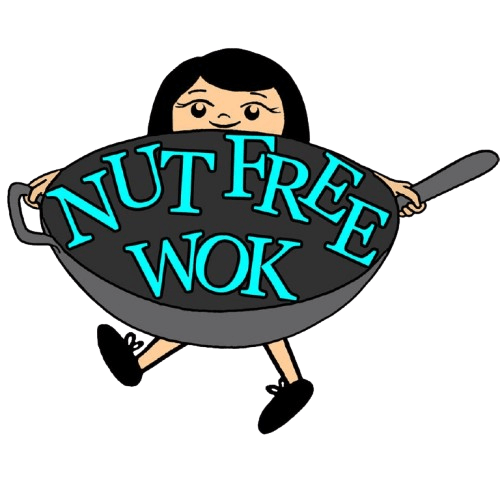
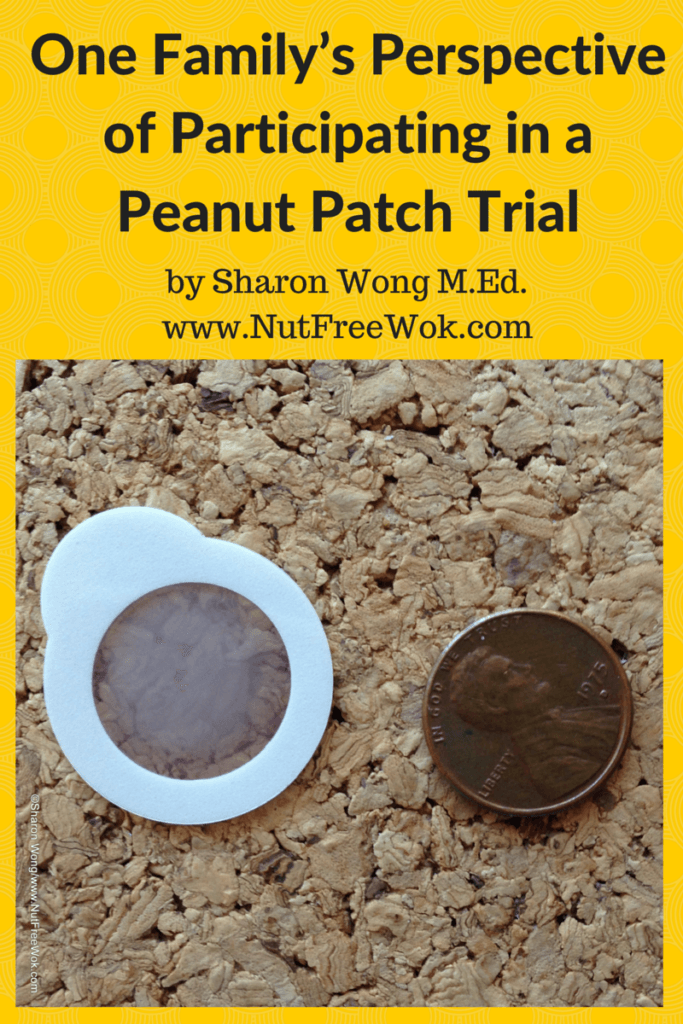
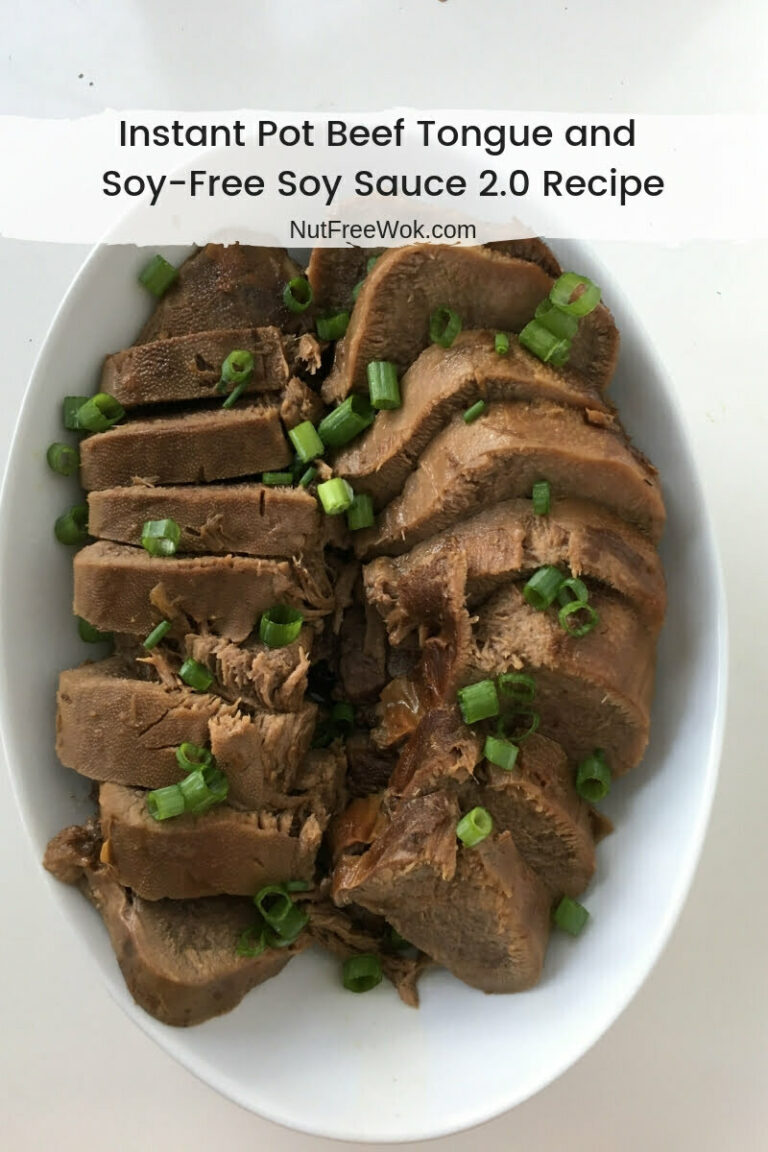
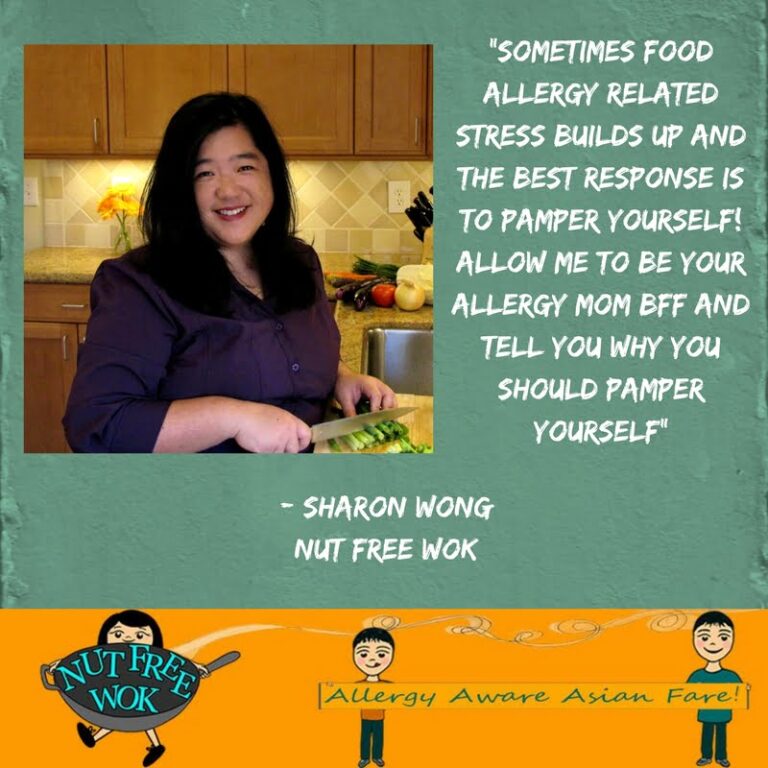

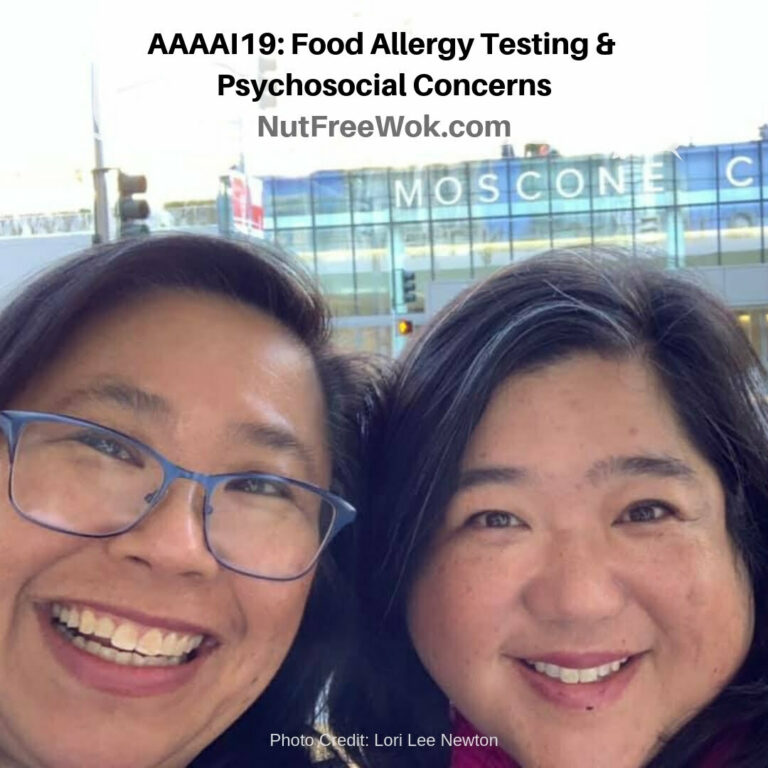
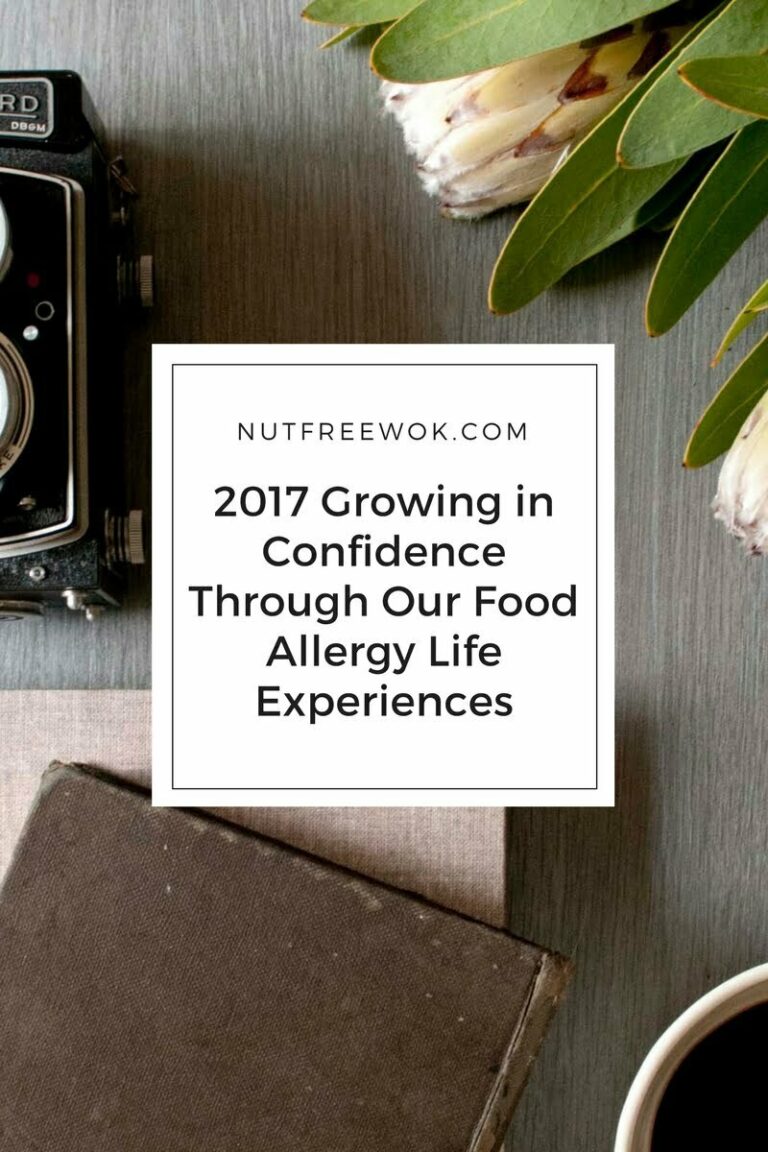
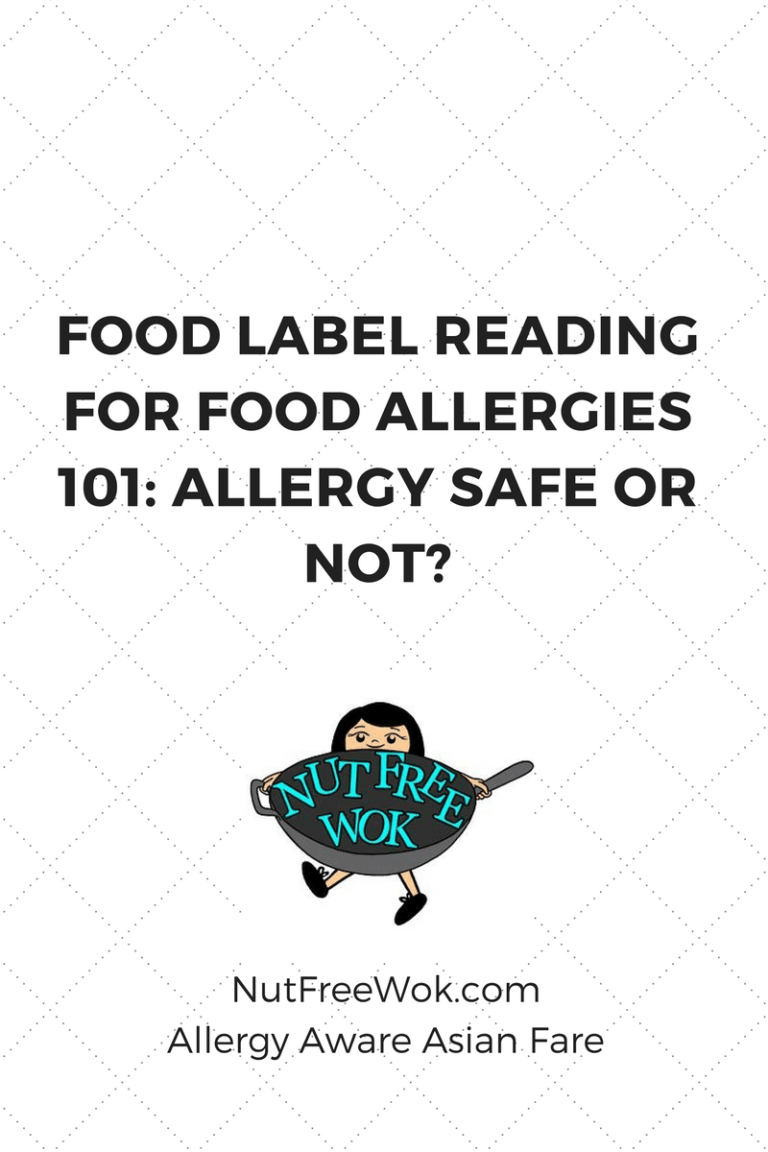
Thank you, Rini! I appreciate your support and friendship. <3
This was such a facsinating read! I am so glad you told me about this article. I have seen people talk about the patch and now, It’s nice to see your personal experience. You and your family is incredibly brave and I am so happy to hear that this helped.
Thank you so much for sharing your family’s experience. And thank you for the courage you and your son had to participate in the trial that will hopefully help all peanut allergic individuals. we live across the bay from SF and I didn’t even know the trial existed until I read something about Dr. Nadeau online by happen chance. My daughter is 13 and is still severely allergic to peanuts, tree nuts, dairy and eggs. We know all too well the anxiety caused by food allergies and asthma and pray every day for a safe treatment and one day hopefully a cure too. thank you again!
You’re welcome, Bri! Sign up for Stanford’s email list for food allergy updates. They have guest speakers and community updates a few times a year, I attend whenever I can as they are fascinating. Thank you so much for your kind words. 🙂
Thank you for sharing your experience Sharon!! My 10 year old is starting a phase III study soon. I was wondering if the redness at the patch lasted for the whole study or it was just at the beginning. If so after how long the skin stopped reacting?
Congratulations and best wishes for much success! The redness was mainly in the beginning and gradually subsided after a few weeks. Sometimes he had tiny flare ups. Your site coordinator would definitely have some specific suggestions.
How exciting for your family. My daughter is also airborne reactive. She will be 8 by the time the patch is available….if everything stays on track. Will she be considered too old to start treatment at that time?
Hi Alicia, thanks for your comment! Have you considered a trial? I think there are some new ones listed on clinicaltrials.gov, take a look and discuss your question about timing with your doctor. Good luck!
Hi Sharon,
What happens at the end of the trial? Does he still get the patch? We are considering phase II for milk and I am concerned about what happens while you wait for Phase III to be concluded.
Thanks,Tiffany
Generally, when the trial ends patients no longer receive patches and then work with their doctors or research site to decide what to do next based upon that patient’s goals and preferences. However, a lot can happen in the next three years and there maybe more choices that we can’t even imagine. This life is truly an adventure. 🙂
Thank you for sharing. My son is allergic to dairy and I’m looking into Viaskin-Milk for him. Does it look like Viaskin needs to be continued long term on a maintenance dose or is the treatment done after a year or so?
Thank you!
Jocelyn
Hi Jocelyn, I think results will vary for each person and DBVT seems to be working on ways to identify when one is “done” with treatment. Ultimately we won’t know until they file for regulatory approval from the FDA but the company is great about releasing the latest information in the fall and right before AAAAI in the spring. If you are invited to a screening appointment, that’s the best time to ask your questions and concerns.
I’m so happy I searched and found your post!! My son, 18yrs old, is a high risk level peanut allergy since tested at age 5. He’s on hold right now for enlisting into the Navy due to the patch/shot not being approved. He must carry his Epi, which he can’t while in boot camp. So I’m praying that the FDA approves things asap!
I submitted to be added to the FB group & I sure hope they accept me! Us Mom’s need a place to share, learn and support each other!
Thank you!!
Tracy
Thank you, Tracy, for taking the time to leave such a nice comment. I hope to see you in the group and good luck to your son! 🙂
My oldest is terrified of peanuts and I don’t know if I could get her to eat peanut protein every day. The patch seems to be a good way to address her allergy. I wish there was a trial closer too us. Right now we would have to fly there and back for each visit and that is pretty cost and time commitment prohibitive for us.
We are driving 2 1/2 hours each way for my youngest to participate in the Palisades trial, but they will only do 1 family member at a time and I have two allergic to peanuts. Hoping the Palisade trial brings similar results for my daughter as she had 4 doses of antihistamine and two shots of epeniphrine before she stopped reacting to 1/30th of a peanut.
It must be so heart-wrenching that your oldest is terrified of peanuts., I feel so much empathy for our children. I think the patch is a great option (pending FDA approval) since the therapy doesn’t require oral ingestion (except for the purposes of establishing baseline and progress in a trial). I hope that her anxiety will lessen and that your allergist can offer some reassurance. Good luck to your little one who is participating in the Palisades trial, thank you for your commitment and effort. Please keep me informed about her progress if you wish.
Hi Sharon,
Your article was informative and encouraging. I am currently considering whether to enroll in the Palisade oral desensitization trial or wait for the another Viaskin phase III trial that will be enrolling soon. I have a lot of apprehension about enrolling in either one but had a lot of questions about how the patch trials work. Your post really helped clarify some things for me. Here’s hoping all of our children (and us, their parents) will be able to live life more freely, with less fear, in the near future.
Continued good luck and health with your son’s treatment.
Thank you, Esther! I’m so glad the article was helpful to you. We’re still waiting to learn more from the results of the trial which concluded recently. I also shared an interview with the folks from Aimmune so definitely read that to compare. It’s a hard decision and I definitely know how it feels to face unknowns. Good luck with your decision and best wishes for your child’s health as well.
Thank you the interview was extremely helpful as well as i hadn’t been able to find information on the results of the phase II trial. I appreciate the support
You’re welcome! I am anxiously awaiting the news of the VIPES/OLFUS results too. There’s still another phase 2 trial that is ongoing.
Sharon, thank you so much for this post! I loved how easy to read it was and how you explained the trial(s) in layman’s terms 🙂 I am so hopeful that this patch can help to protect peanut-allergic children. My son has just started with phase III so I’m doing some online research to learn more. I see people writing their child’s peanut allergies as numbers like >100 but I don’t know what that means. I’m going to try to find out more at our next appointment with the allergist.
Hi Michelle! Thanks so much for taking the time to leave such a nice comment, it makes my day knowing that my son’s story encourages others. Thank you for helping to advance food allergy research, I hope that your son’s participation will help him greatly. Usually when people refer to >100 they are talking about a blood test level. If you are on Facebook, there is a tiny but wonderful group, Food Allergy Patch Trials, it’s a great support group.
Is the facebook group still around Sharon? I can’t seem to find it.
It’s still around but recently switched to a secret group and members need to be in a patch trial.
When your son has the placebo vs 250 was there any difference in reactions from wearing the patch on his skin?
Hi Christine, I hesitate to say anything to lead people to misunderstand or make generalizations. So with the caveat that everyone reacts differently, my response to your question is yes and no. With the placebo patch we saw minor irritations on his skin throughout the year which were pretty convincing that they weren’t placebo patches yet we saw minor irritations with the 250 mcg patches which were dramatic but fleeting. I had to embrace the unknown. If your child is in a trial, or considering being in a trial, I totally understand the desire to know whether your child is receiving any benefit from the trial. The best person to ask is the doctor that oversees the trial at your local center.
Thank you so much for sharing your little ones story. My son (4 year old) just got his patch on for the phase 3 study. I am curious. When your son had the placebo patch on.. Did he show any redness or reactions? I only ask because our site claims that even the placebo could have a substance on it to cause this so that it isn’t so obvious who has the placebo, and who has the real patch.
Secondly- the second time around, when you son wore the patch, did he show any of these signs around or on the patch area?
Thanks soooo very much for your help.
Christina Harber
Congratulations, Christine! I hope all goes well for your son and thank you for reading and sharing. I am seeing posts in backwards order so I apologize if this doesn’t make sense. It’s very possible that the placebo patches have something on them to cause a bit of redness and it could even be different from the patches provided in VIPES. Try not to worry and stay in touch with your site if you have any concerns. Good luck!!
Sharon….thank you so much for sharing your family’s story. My son is airborne ana to peanut and egg. Today we received the email that phase 3 is beginning and they are looking for participants…and I submitted, but am terrified at the idea of him ingesting peanut (rast >100). I read your story and want you to know I think you are an incredibly brave mother. Bravo to you for putting him before your fears. I wish the best to you all moving forward <3
Thank you, Jennifer, for your very kind message. You totally made my day, thank you! Good luck to you son as he embarks on phase 3 of the peanut patch trials. I am excited for your family. Please keep me posted and feel free to reach out anytime.
Sharon,
I can’t thank you enough for posting this. My (>100) peanut-allergic son is scheduled for screening for the Phase 3 of the peanut patch trials and like Jenifer above, I am terrified at the thought of him ingesting peanuts. Reading about your son’s experience has put my mind at ease. I will read this post again tomorrow with my son, as I know he would love to hear about another child’s experience in the trial.
Congratulations on getting through this, and thank you so much for helping other families in the same situation.
Gloria, it’s my pleasure to share our experience. I remember when we were in your exact shoes I searched intensively to learn more about the peanut patch and a clinical trial experience in general. There was very little information back then so I know exactly how you feel. Good luck to your son and please keep in touch and let me know how things are going.
Hello and thank you posting this info.. it gives me hope for my son. Can you please post an update when you have the results of his next test? thank you! and thank you to your son!
Hi JS, he had his final DBPCFC a few weeks ago and his results were pretty much identical to last year, same eliciting dose but milder symptoms. I’m guessing he can tolerate accidental exposure via air, contact, and ingestion but beyond that I don’t know. I haven’t posted anything new I am “embracing uncertainty” again. The team at the SNP center are forming plans for a follow up study to help us further but that would be separate from DBV’s clinical trials.
Thank you for this informative blog! Did you son do the food challenge after stopping the patch for 2 months? Was he still able to tolerate the 5-6 peanuts? Do they suggest to eat that dose regularly after the trail to keep up tolerance?
I had no idea a person could be so allergic, this has been such an informative post and read. Your son is so brave! What an exceptional young man and supportive family. Best of luck & I look forward to your updates.
Hi Debra, thank you so much for your kind words. <3
Sharon,
Thank you for sharing your family’s journey. It give me a lot of hope! Many blessing to you and your family. 🙂
–Tanya
Thank you, Tanya for your kind words and support. <3
Thank you for sharing! Such hopefully news <3
Thank you, Holly for your kind words and friendship, always. <3
My son is on week 2 of his patch trials. Thanks for sharing such a detailed description of your experience. It give me hope that my son will have similar results.
Currently he is experienceing a rash under his patch but his runny nose and eyes as a result of the patch has ended.
You’re welcome, I hope your son has a great experience too. Best wishes and please let me know how things turn out in about 50 weeks! I’m so excited for your family. 🙂
You’re welcome, Tony! Best wishes to your son. I would love to hear more about your son’s progress in about a year. 🙂